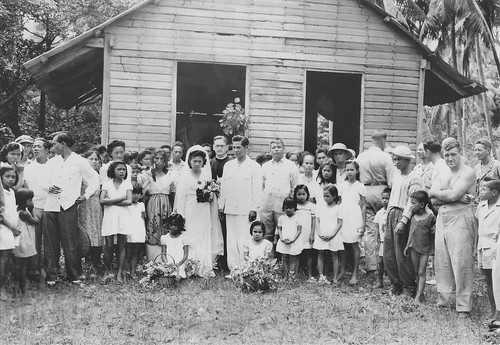
What is Ancient Practice on Marriage in Philippines?
The Philippine Ancient wedding tradition was pertain to the characteristic of marriage and wedding tradition it is a very special occasion for the Filipino men and Women. the wedding was adhered after period of courtships and engagement. these wedding tradition of Filipino was extends to the country were Filipino communities exist. the word wedding in Filipino language is kasalan and it's root word kasal means marriage. but these traditional practices on marriage in the present day was a combination of pre-colonial and western wedding practices, like the Spanish and American.
Where the Ancient wedding rituals perform?
- In the Ancient time the wedding was perform in the house of the priest or babaylan where the couple was being blessed by Babaylan. but in the present day the ritual is performed now in the church, because for all Filipino the church is the most sacred place.
When the Ancient wedding held?
- It was held after the groom is speak to the parents of the bride about his intention. then his parents as well must call on the bride's to gain their approval and to plan the wedding, a practice called Pamamanhikan. and it was also in tradition that all the expenses was pay by the grooms side. but now some couple's pay for their wedding.
Who among the Filipino's still practice the Ancient Wedding?
- Most of the Filipino now is modern so they have some changes about their sacred wedding, but those who still practice the old wedding tradition is the people that lived in a far away province and also the family that have the old tradition about the wedding.
How to Perform the Ancient wedding?
A typical ancient traditional Filipino wedding, during pre-colonial times, is held for three days and was officiated by a Babaylan, a tribal priest or priestess. The house of the babaylan was the ceremonial center for the nuptial. On the first day, the couple was brought to the priest's home, where the babaylan blesses them, while their hands are joined over a container of uncooked rice. On the third day, the priest would prick their chests to draw a small amount of blood, which will be placed on a container to be mixed with water. After announcing their love for each other for three times, they were fed by the priest with cooked rice coming from a single container. Afterwards, they were to drink the water that was mixed with their blood. The priest proclaimed that they are officially wed after their necks and hands were bound by a cord or, sometimes, once their long hairs had been entwined together.In lieu of the babaylan, the datu or a wise elder may also officiate a pre-colonial Filipino wedding.
After the ceremony, a series of gift-exchanging rituals was also done to counter the negative responses of the bride: if asked to enter her new home, if she refuses to go up the stairs of the dwelling, if she denies to participate in the marriage banquet, or even to go into her new bedroom, a room she would be sharing with her spouse.
Spanish colonialism brought changes to these marriage rituals because of the teachings and conversion efforts of Spanish missionaries, which occurred as early as the 18th century. As a result, the majority of current-day Filipino weddings became predominantly Christian or Catholic. in character, which is also because of the mostly Catholic population, although indigenous traditions still exist today in other regions of the Philippines. Parts of Filipino wedding ceremonies have become faith-centered and God-centered, which also highlights the concept that the joining of two individuals is a "life long commitment" of loving and caring. In general, the marriage itself does not only signify the union of two persons, but also the fusion of two families, and the unification two clans.
Happy Reading :)
Sources: http://en.wikipedia.org/wiki/Main_Page
http://en.wikipilipinas.org/index.php/Main_Page
Assignment in Philippine Government
Good read. :-)
ReplyDelete